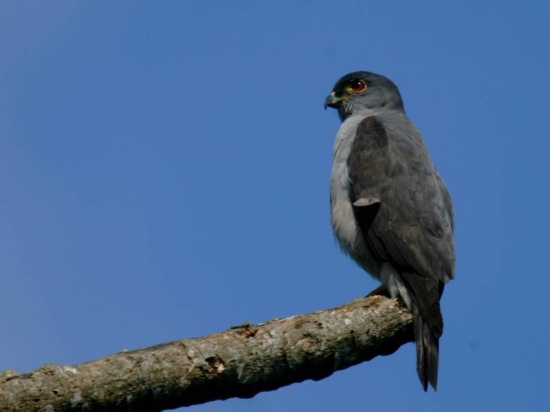(taxon, references, remove {{incomplete}}) |
|||
| Line 1: | Line 1: | ||
| − | + | ||
;[[: Category:Harpagus|Harpagus]] diodon | ;[[: Category:Harpagus|Harpagus]] diodon | ||
[[Image:Rufous-thighed_Kite.jpg|thumb|550px|right|Photo by Jamfaraco<br>Location: Palhoça-SC, [[Brazil]] ]] | [[Image:Rufous-thighed_Kite.jpg|thumb|550px|right|Photo by Jamfaraco<br>Location: Palhoça-SC, [[Brazil]] ]] | ||
| Line 12: | Line 12: | ||
==Taxonomy== | ==Taxonomy== | ||
| − | + | This is a [[Dictionary_M-O#M|monotypic]] species<sup>[[#References|1]]</sup>. | |
==Habitat== | ==Habitat== | ||
Forests. | Forests. | ||
| Line 18: | Line 18: | ||
The diet includes large insects and lizards. | The diet includes large insects and lizards. | ||
| + | ==References== | ||
| + | #{{Ref-Clements6thAug14}} | ||
| + | {{ref}} | ||
==External Links== | ==External Links== | ||
{{GSearch|Harpagus+diodon}} | {{GSearch|Harpagus+diodon}} | ||
[[Category:Birds]] [[Category:Harpagus]] | [[Category:Birds]] [[Category:Harpagus]] | ||
Revision as of 01:43, 3 December 2014
- Harpagus diodon
Identification
Slate-grey above and pale-grey below with shortish wings and a longish tail. It has rufous thighs and rufous wing-linings.
Similar Species
Double-toothed Kite is a big cause of misidentification.
Distribution
Brazil to northern Argentina, Paraguay and eastern Bolivia. This seems to be a migrant breeding in austral summer in Atlantic Forest and vacating the southernmost part of this range in austral winter which is spent in Amazonian areas.
Taxonomy
Habitat
Forests.
Behaviour
The diet includes large insects and lizards.
References
- Clements, J. F., T. S. Schulenberg, M. J. Iliff, D. Roberson, T. A. Fredericks, B. L. Sullivan, and C. L. Wood. 2014. The eBird/Clements checklist of birds of the world: Version 6.9., with updates to August 2014. Downloaded from http://www.birds.cornell.edu/clementschecklist/download/
Recommended Citation
- BirdForum Opus contributors. (2024) Rufous-thighed Kite. In: BirdForum, the forum for wild birds and birding. Retrieved 23 April 2024 from https://www.birdforum.net/opus/Rufous-thighed_Kite




